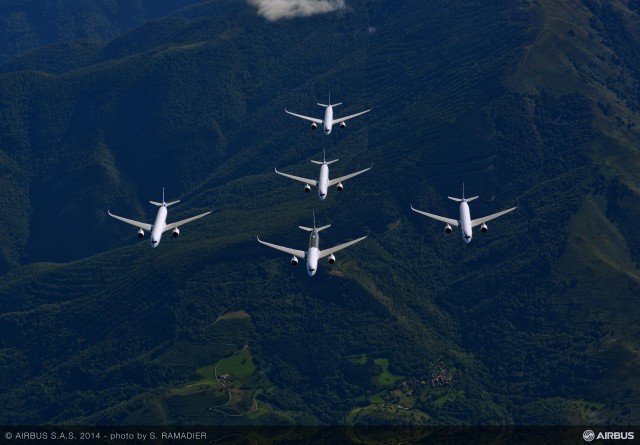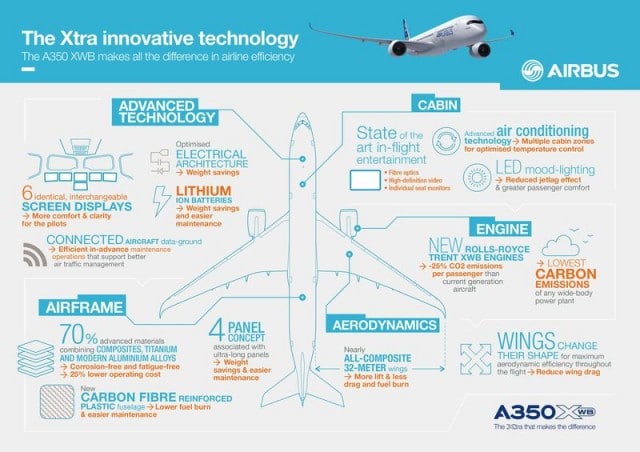Five Airbus A350-XWB in Formation
This week had a once-in-a-lifetime opportunity for plane spotters: Five Airbus A350-900 test aircraft flying in formation. The Airbus A350-900 received its type certification from the European Aviation Safety Agency (EASA). The FAA certification will follow.

The A350-900 Type Certification comes after successfully finishing a stringent programme of certification trials which has taken its airframe and systems well beyond their design limits to ensure all airworthiness criteria are fully met.
The A350 XWB (Xtra Wide-Body) is the first Airbus to have a fuselage and wings made primarily of carbon-fiber-reinforced polymer. The A350-900 series seats 314 passengers nine abreast and has a range of 14,350 kilometres, almost the distance from New York to Brisbane.
Airbus say that the A350-XWB is 16% lighter manufacturer’s empty weight (MEW) per seat and uses 25% less fuel. The A350 is expected to enter service by the end of the year.
The prototype A350 first flew on 14 June 2013 at Tolouse-Blagnac Airport in France. Now, just over a year later, the A350 hyas its type certification.
The test aircraft collected over 2,600 flight test hours over 600 flights. As a celebration of the type certification the five A350s performed a formation flight at the end of their programme.
It is usually much too expensive for commercial aircraft to be used for formation flying so this is quite a sight to behold.
The video was filmed using a sixth aircraft, a Corvette, which chased the five A350-XWBs.









The A350 “is 16% lighter and uses 25% less fuel”.
Compared to ?
The chase aircraft was an Aerospatiale SN601 Corvette. Happy memories, I did about 1200 hours in one. A superb aircraft, albeit a bit underpowered. The P&W JT15D engines used were very similar to those of the Citation 550.
It was first designed to take French Aztafan engines but when the prototype was ready Aztazou staff were on strike. The Canadian P&W engines were available and French industry lost out.
The Corvette had a VMO of 340 kts and an MMO of .77.
It had a nearly unlimited crosswind capability. A lovely aircraft to fly, the best handling light jet that ever was.
The Corvette was a bit ahead of it’s time. Only 40 were eventually built before the project was shelved.
Good to see that some are still flying.
Anyway, in the ‘eighties British Airways had a formation of all their Concordes for a photo opp.
These photos made it into Flight international.
I was flying, I think it was a Ce550 into Heathrow when we were vectored around “a formation of five Concordes”. As we taxied in, they all came in to land, one after the next. Very impressive.